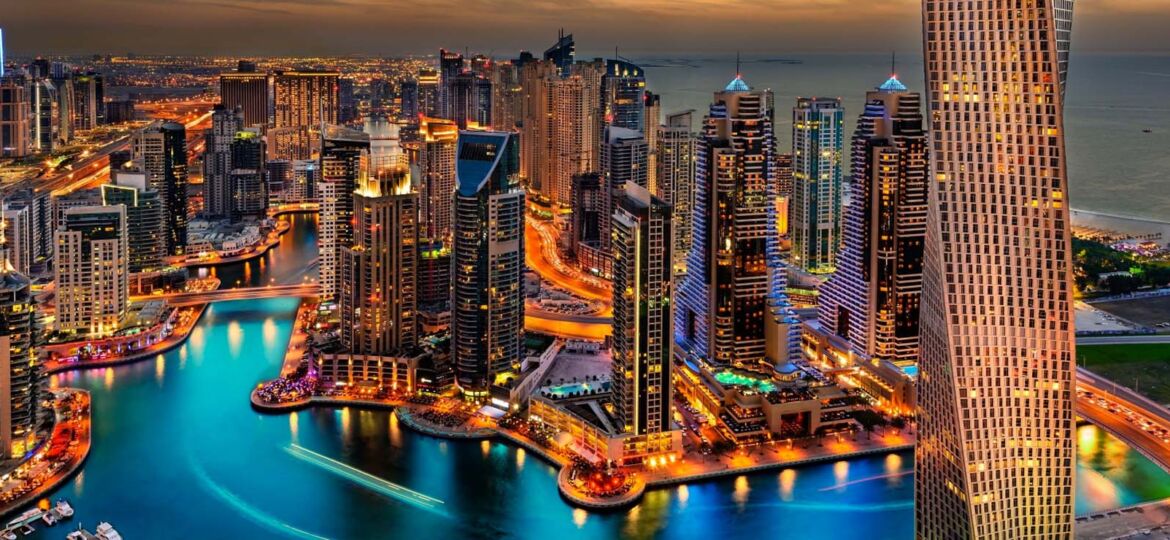
WHY THIS MATTERS IN BRIEF
Company’s have begun 3D printing houses and small buildings, but noone, until now, has laid out plans to 3D print an entire skyscraper.
UAE’s ruler, His Highness Sheikh’s Mohammed bin Rashid Al Maktoum, has a grand vision for Dubai. He wants to turn Dubai into the city of the future, and so far he’s off to an impressive start – something I’ll be able to see for myself when I speak at next months 12th Ideas Arabia Conference, which is hosted by his uncle His Highness Sheikh Ahmed bin Saeed Al Maktoum, CEO of Emirates Airlines and the Chairman of Dubai World, so if you’re in the neighbourhood drop me a line.
In the past year alone his Highness has started rolling out the world’s first robot police force, agreed to put the Emirate onto the Blockchain and in July the Emirate will commence the world’s first Sky Taxi service, but that’s not all – he’s also signed contracts to begin construction of the world’s first Hyperloop network, colonise Mars, and bought hundreds of self-driving Teslas to build out the world’s first integrated autonomous transportation network.
A look at the technology
For all these grand announcements though there’s one world changing emerging technology that’s conspicuous by its absence and that’s 3D printing. Elsewhere companies like Apis Cor are 3D printing houses in San Fransciso and PassivDom are 3D printing off grid homes in Ukraine, and while Dubai’s been trialling the technology to fabricate small buildings one can’t help but feel that that’s just not “grand” enough.
Now though all that looks set to change and Dubai’s rulers have announced that, starting in 2020 they will begin construction of the world’s first 3D printed skyscraper – a 1,375 foot tall building with eighty floors that revolve, yes, revolve, around a concrete core. Evidently 3D printing a skyscraper isn’t enough – it has to revolve too… but hey, this is Dubai and they don’t do anything by halves.
An initial concept
The sky scraper is the brain child of Chris Kelsey, the CEO of Cazza, a new generation 3D printing and construction company and will be built using a new construction technique that the firm is calling “Crane printing” where the company will use cranes that are specially out fitted with 3D printing equipment capable of printing concrete and steel structures that are 80 meters tall and above.
“When we first thought of implementing 3D printing technologies, we were mostly thinking of houses and low-rise buildings. Developers kept asking us if it was possible to build a 3D printed skyscraper. This led us to begin researching how we could adapt the technologies for taller structures. Through our technologies, we will be able to build architecturally complex buildings at never before seen speeds. It is all about economies of scale where the initial high technology costs will reduce as we enter the mass-production phase,” said Kelsey.
“The material side leaves vast possibilities with concrete and steel being just one of many materials that can be used with 3D printing,” said Xavier Hernand, a mechanical engineer at Cazza.
Cazza’s crane printing process includes all the usual major structural components needed to fabricate tall buildings, including ways to 3D print reinforced steel rebar, and they will be used to 3D print specific parts of the skyscraper with the rest of construction undertaken through existing methods.
“The crane printing system can be easily adopted with existing cranes which means we don’t have to build cranes from scratch, said Fernando De Los Rios, COO at Cazza, “we are adding new features to make it adaptable to high wind speeds along with the use of our layer smoothing system that creates completely flat surfaces. You won’t know its 3D printed.”
Cazza’s already known for producing a 3D printing construction system that combines the use of mobile 3D printing robots with existing construction methods to make construction processes faster, more cost effective, and environmentally friendly, and in December, the Dubai Government announced a collaboration with them to help boost the development of the technology.
“We believe in and admire HH Sheikh’s Mohammed bin Rashid Al Maktoum’s 10X vision and shall do everything we can to bring further world changing innovation. We came here to change the world, and that’s exactly what we’re doing,” he said.
One minute we’re 3D printing human brains, cartilage, hearts, kidneys and skin and the next it’s coral reefs, homes, munitions, robots and sneakers, but now I guess the sky’s the limit…



















